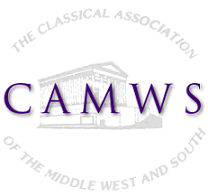Our 2017 field and lab season in Transylvania (Romania) is up and running. We are continuing to make great strides into a new understanding of the development of the Roman frontier populations, ideas and “nations”. Dacia (i.e. modern historical Transylvania) was, arguably, the most important frontier of the Roman Empire: its gold and silver sustained the doomed imperial economy for about two centuries.
However, the “imperial idea” on the Eastern European Provincial frontier was more complex that Rome ever expected it… and it even outlasted the idea of Rome itself. Local Roman Provincial realities, born out of economic, cultural, social and political creolization, constant and dynamic negotiation of power, and shifting populations have outlasted the ideological centers that have claimed historical ownership of these regions, creating their own distinct expressions of identity.
Our field results in Southern Transylvania have surpassed our wildest expectations!!! Our exploration of the Rapolt area, situated on the main imperial road, half way between Sarmisegetuza Ulpia Traiana (first Roman city north of the Danube), Apulum (capital of Dacia Apulensis and largest power center in Eastern Barbaricum), in the foothills of the Gold Mountains (the largest gold deposit – still – in Europe), has yielded one of the most unexpected discoveries in the region: a palatial size villa, with a rich and dramatic history, surrounded by an intensively exploited rural area. This environment, unique in Eastern/South-Eastern Europe, has been created in a very short time and lasted – officially – around 150 years.
Our programs offer a very extensive approach to the anthropology and archaeology of the Roman frontier environments, through field work, laboratory analysis and lectures. Our participants will be able to experience several field approaches, ranging from Classical excavation, anthropological site exploration, traditional STP (shovel test pit), geochemical soil (phosphate) and geophysical (Ground Penetrating Radar – GPR) surveys, aerial and satellite imagery analysis. Our programs provide a complete and scientifically integrated approach to a Classical site, in a very complex environment. In a region fundamentally important to our understanding of European genesis.
Our programs:
Roman Provincial Settlement Excavation and Survey – Life by the Imperial Roads
Location: Rapolt, Hunedoara County, Transylvania - Romania
Dates:
Session 1: May 21 - June 10, 2017
Session 2: June 11 - July 1, 2017
Session 3: July 2 - July 22, 2017
Web Site: http://www.archaeotek-archaeol
Description: The project integrates Classical excavation approaches with various exploratory field techniques, ranging from STP (shovel test pits), geochemical soil analysis (phosphate spot testing), and surface field collection coupled with topographical total station assisted mapping. We will be looking at the transformation of the countryside in relation to the development of the Imperial road river infrastructure, and the role of our “palatial villa” in the development of a creolized Roman landscape.
Roman Villa Excavation – Identity and Wealth on the Roman Frontier
Location: Rapolt, Hunedoara County, Transylvania - Romania
Dates:
Session 1: June 11 - July 1, 2017
Session 2: July 2 - July 22, 2017
Session 3: July 23 – August 12, 2017
Web Site: http://www.archaeotek-archaeol
Description: The integrated results of our various field techniques have yielded extraordinary results: a rural built space of ca. one hectare, with massive fortification walls decorated with exterior frescoes, with richly built two stories buildings, containing exceptional artifacts (well preserved bronze statues, jewelry, pristine condition coins, writing implements, etc.). Our target excavation, the central building of the “villa” has already presented us with a very complex and surprising occupation sequence and practices.
Applied Field Geophysics Workshop – Ground Penetrating Radar Workshop
Location: Rapolt, Hunedoara County, Transylvania - Romania
Dates: 3-day intensive GPR program, integrated with our field programs
Web Site: http://www.archaeotek-archaeol
Description: Our program offers intensive training in Ground Penetrating Radar exploration techniques, both field and laboratory analysis, as it applies to the anthropogenic transformation of a historical landscape, in this case, the hinterland of the “palatial villa” and associated structures, roads and land use. All participants registered to two field sessions of the above can participate to the Geophysics Workshop free of cost.
Our participants will not only explore the archaeology of the region, but have the opportunity to sample the magic of Transylvania, through its amazing historical and natural landscapes.
Our programs are available for both credit students and non-credit participants.
Andre Gonciar
Director - ArchaeoTek
www.archaeotek-archaeology.org
